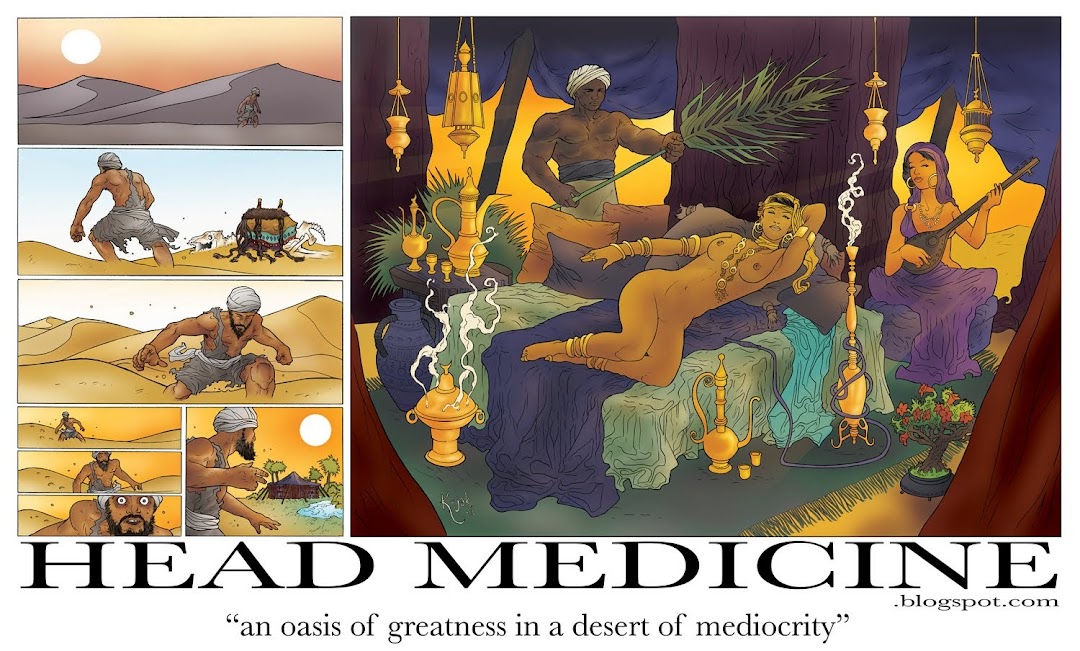from Wikipedia:
Krampus is a beast-like creature from the folklore of Alpine countries thought to punish children during the Yule season who had misbehaved, in contrast with Saint Nicholas, who rewards well-behaved ones with gifts. Krampus is said to capture particularly naughty children in his sack and carry them away to his lair. Krampus is represented as a beast-like creature, generally demonic in appearance. The creature has roots in Germanic folklore; however, its influence has spread far beyond German borders. Traditionally, young men dress up as the Krampus in Austria, southern Bavaria, South Tyrol, northern Friuli, Hungary, Slovenia, the Czech Republic, the Slovak Republic, and Croatia during the first week of December, particularly on the evening of 5 December (the eve of Saint Nicholas day on many church calendars), and roam the streets frightening children with rusty chains and bells. Krampus is featured on holiday greeting cards called Krampuskarten. There are many names for Krampus, as well as many regional variations in portrayal and celebration.
The history of the Krampus figure stretches back to pre-Christian Germanic traditions. He is sometimes said to be the son of Hel, from Norse mythology. He also shares characteristics, including goat-like ears, legs, feet, with the satyrs and fauns of Greek mythology. The early Catholic Church discouraged celebrations based around the wild goat-like creatures, and during the Inquisition efforts were made to stamp them out. But Krampus figures persisted, and by the 17th century Krampus had been incorporated into Christian winter celebrations by pairing them with St. Nicholas.
Countries of the former Habsburg empire have largely borrowed the tradition of Krampus accompanying St. Nicholas on 5 December from Austria. However, in the Czech Republic and Slovakia the mythological figure (called čert) evolved from the Slavic demon chort and although nearly the same in appearance, it comes from a tradition distinct from that of Alpine nations.
Although Krampus appears in many variations, most share some common physical characteristics. He is hairy, usually brown or black, and has the cloven hooves and horns of a goat. His long pointed tongue lolls out. Krampus carries chains, thought to symbolize the binding of the Devil by the Christian Church. He thrashes the chains for dramatic effect. The chains are sometimes accompanied with bells of various sizes. Of more pagan origins are the ruten, bundles of birch branches that Krampus carries and occasionally swats children with. The ruten have significance in pre-Christian pagan initiation rites. The birch branches are replaced with a whip in some representations. Sometimes Krampus appears with a sack or a washtub strapped to his back; this is to cart off evil children for drowning, eating, or transport to Hell.
The Feast of St. Nicholas is celebrated in parts of Europe on 6 December. In Alpine countries, Saint Nicholas's devilish companion is Krampus. On the preceding evening, Krampus Night or Krampusnacht, the hairy devil appears on the streets. Sometimes accompanying St. Nicholas and sometimes on his own, Krampus visits homes and businesses. The Saint usually appears in the Eastern Rite vestments of a bishop, and he carries a ceremonial staff. Unlike North American versions of Santa Claus, in these celebrations Saint Nicholas concerns himself only with the good children, while Krampus is responsible for the bad. Nicholas dispenses gifts, while Krampus supplies coal and the ruten bundles.
Europeans have been exchanging greeting cards featuring Krampus since the 1800's. Sometimes introduced with Gruß vom Krampus (Greetings from the Krampus), the cards usually have humorous rhymes and poems. Krampus is often featured looming menacingly over children. He is also shown as having one human foot and one cloven hoof. In some, Krampus has sexual overtones; he is pictured pursuing buxom women. Over time, the representation of Krampus in the cards has changed; older versions have a more frightening Krampus, while modern versions have a cuter, more Cupid-like creature. Krampus has also adorned postcards and candy containers.
Krampus appears in various forms, and as part of differing celebrations, throughout central Europe. In Styria, the ruten bundles are presented by Krampus to families. The twigs are painted gold and displayed year-round in the house – a reminder to any child who has temporarily forgotten Krampus. In smaller, more isolated villages, the character has other beastly companions, such as the antlered "wild man" figures, and St. Nicholas is nowhere to be seen. These Styrian companions of Krampus are called Schabmänner or Rauhen. A toned-down version is part of the popular Christmas markets in Austrian urban centres like Salzburg. In these, more tourist-friendly interpretations, Krampus is more humorous than fearsome. In the 1600's, the Lutheran Church presented a "christchild" figure in the place of the Catholic Saint Nicholas. Representing the baby Jesus but often appearing as a young maiden, this figure was also paired with Krampus in some areas. In France's Alsace region, Krampus is known as Hans Trapp and accompanies a "christchild" character during the holiday season.
North American Krampus celebrations, though rare, are a growing phenomenon. Some traditional Germanic communities in the northeast of the United States have preserved a Krampus tradition; in these he goes by Bellsnichol and combines aspects of both the wild man and Saint Nicholas.
The word Krampus (sometimes spelled "Grampus") is a derivation of the old German word for claw, but the creature has many names. Klaubauf is used throughout Austria, while Bartl or Bartel, Niglobartl, and Wubartl are used in the southern part of the country. Outside Austria, Krampus and related creatures go by Pelzebock or Pelznickel in southern Germany, and Gumphinckel. In Hungary, he is Krampusz (often used to refer to the entire race of these creatures), and in Switzerland, Schmutzli.
an Krampus isn't just all about the kids.
even more images HERE



































No comments:
Post a Comment